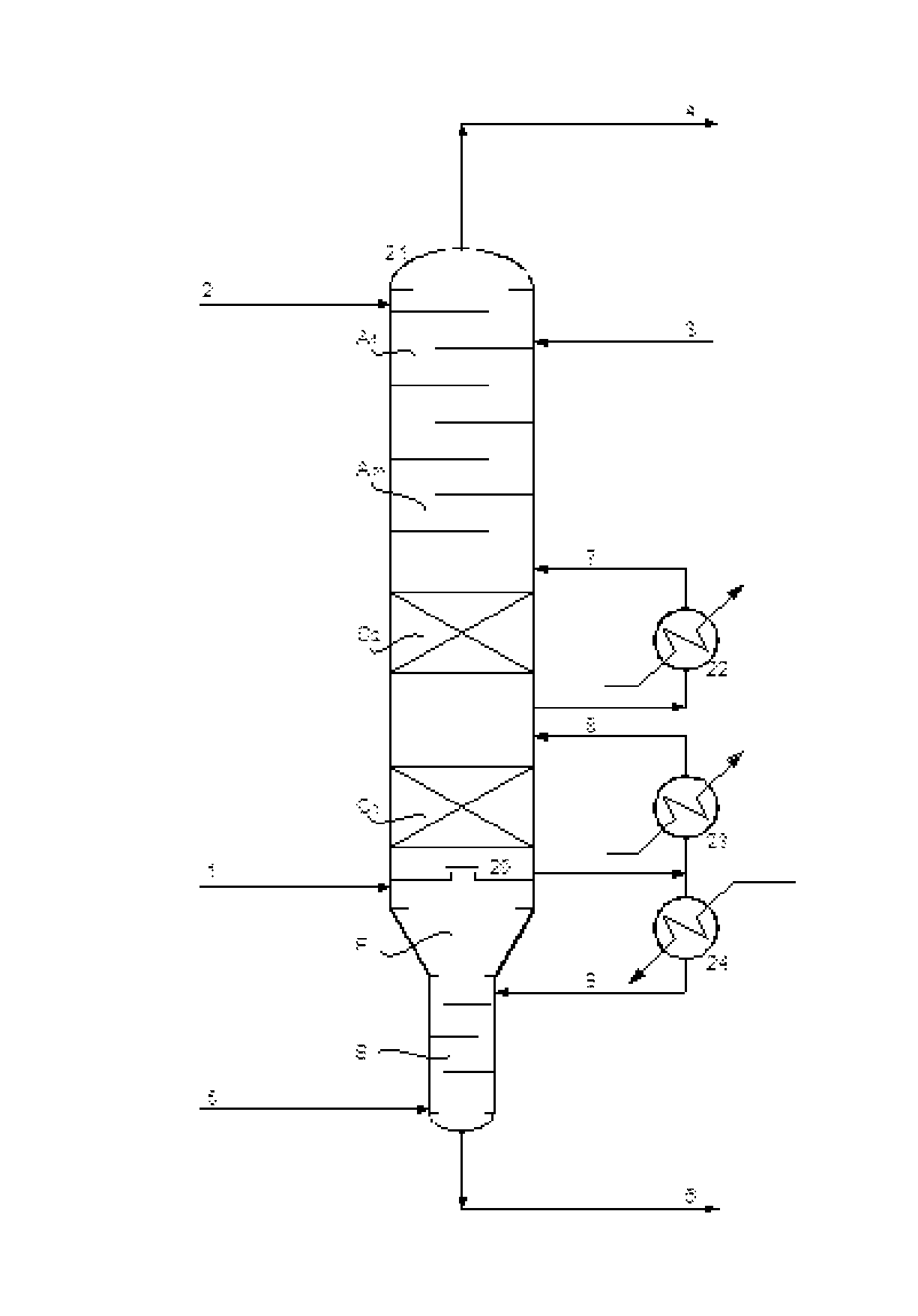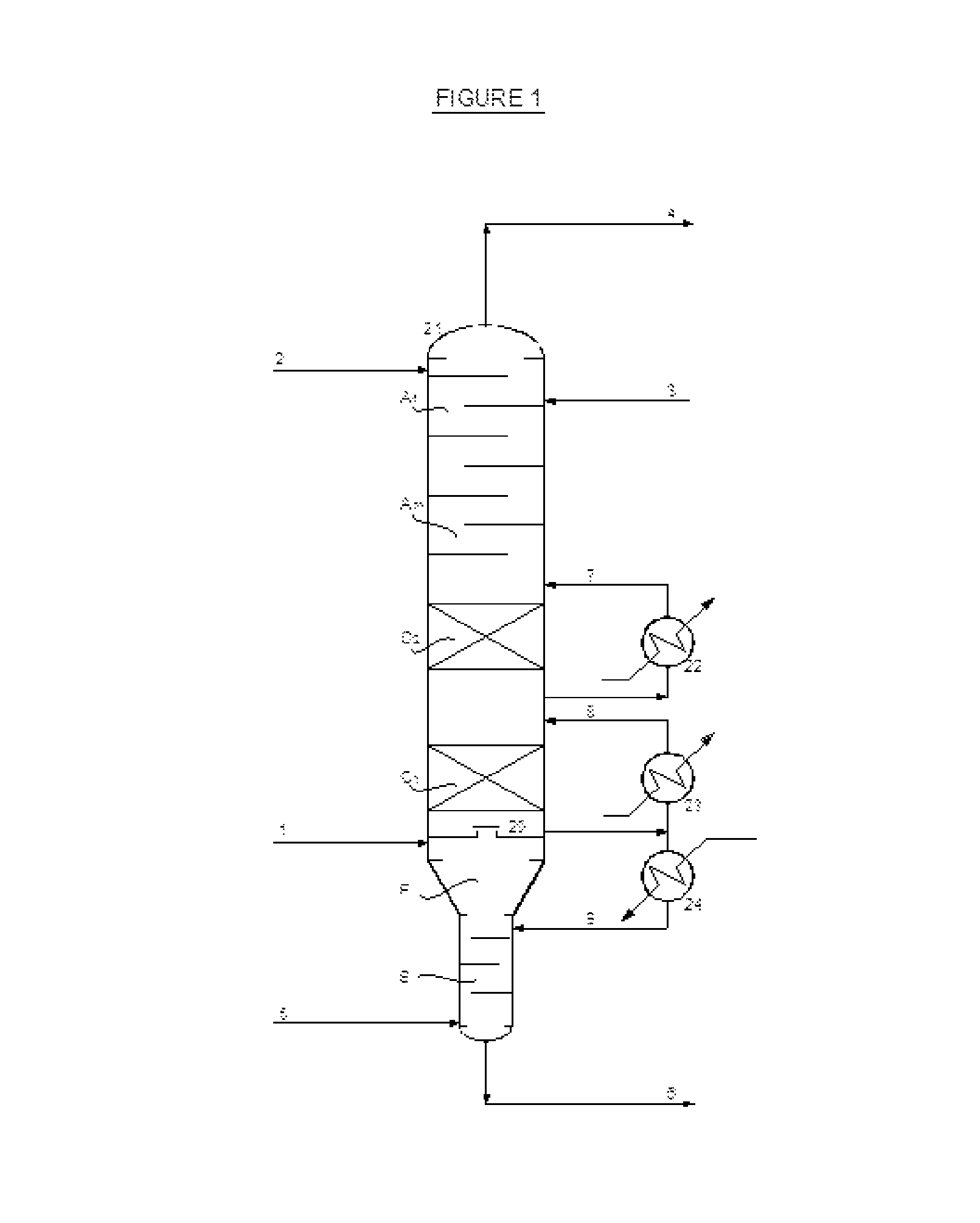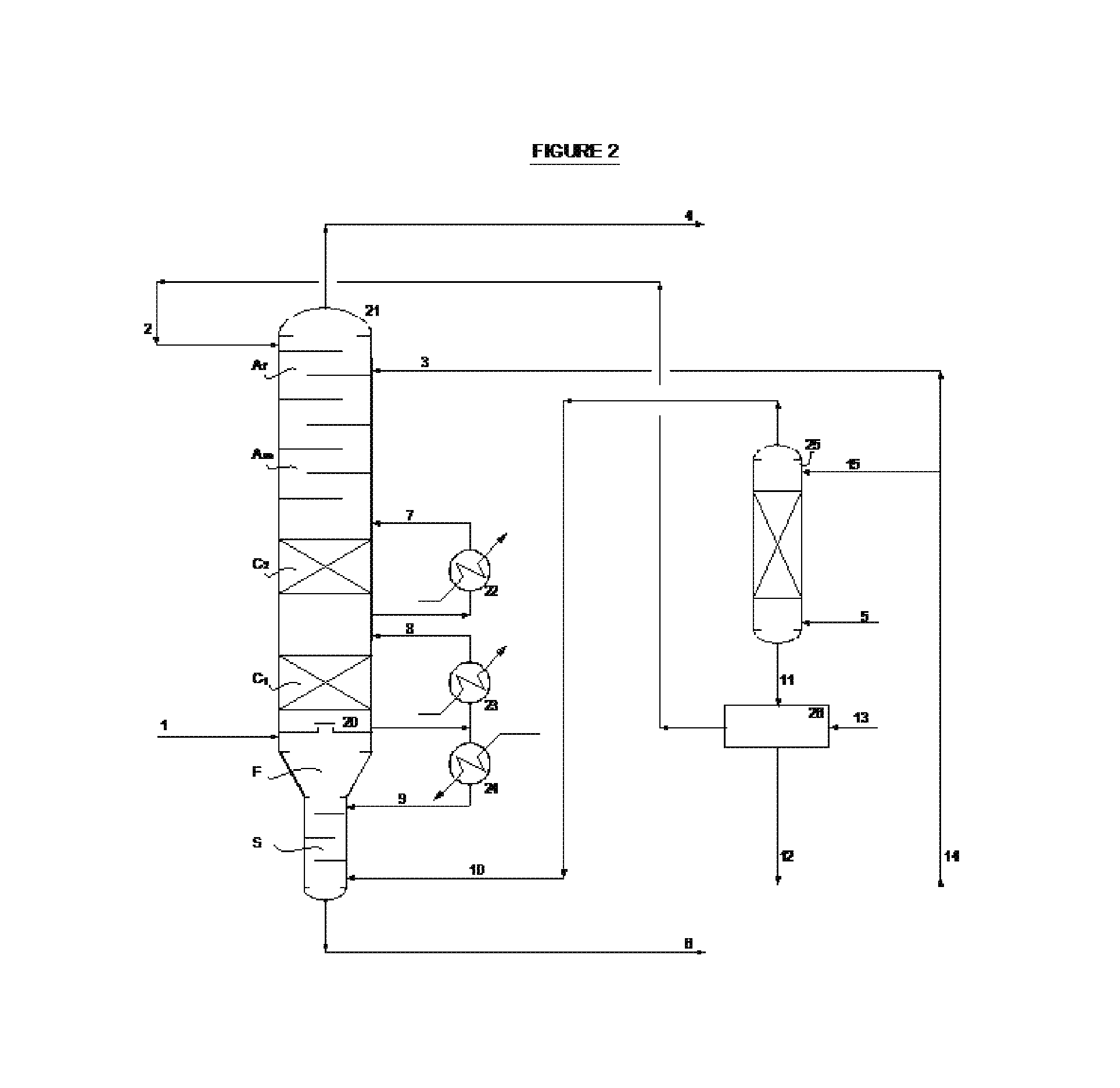Process for recovery of maleic anhydride by using organic solvent
a technology of organic solvent and maleic anhydride, which is applied in the field of maleic anhydride recovery processes and equipment, can solve the problems of discontinuous steam demand, low recovery yield, and high energy consumption, and achieve the effects of reducing maintenance, high recovery yield, and reducing the formation of maleic acid
- Summary
- Abstract
- Description
- Claims
- Application Information
AI Technical Summary
Benefits of technology
Problems solved by technology
Method used
Image
Examples
examples
[0082]In a 20,000 MT / Y maleic anhydride manufacturing plant, a stream of vaporized high purity n-butane is mixed with a stream of compressed air and enters tubular reactor with around 18000 vertical tubes including a VPO catalyst type SynDane 3100 manufactured by Scientific Design Company Inc.
[0083]The reaction operates under condition of partial gas recycle from the overhead of the maleic anhydride absorption column to the suction of the air compressor, with recovery of a fraction of the n-butane not converted inside the tubes of the reactor. The effluent gas from the reactor at around 400° C., after adequate cooling in two heat exchangers in series, is fed to the recovery section of the plant under the condition shown in Table I.
[0084]
TABLE IReference reactor effluentFlow-rate, Kg / hr79000Composition, % molnitrogen74.9oxygen14.3water7.8carbon monoxide0.9carbon dioxide0.84n-butane0.3maleic anhydride0.94acetic acid0.01acrylic acid0.01Temperature, ° C.170Pressure, KPa g0.6
[0085]The fo...
example 7
[0092]The absorption column has been supplied with a single cooling system. The absorption section has still theoretical trays, with further two trays at the bottom for water stripping by fresh hot air. The solvent flow rate is 15000 Kg / hr, same of example 1.
[0093]According to this invention, the lean solvent is divided in two parts: about 15% of total, without any maleic anhydride, is fed to the top tray, while the remaining 85%, containing less than 1 wt % of maleic anhydride, is fed to the second tray from the top.
[0094]
TABLE IISingle cooling absorberSolvent flow rate, Kg / hr15000Absorber temperature profile, ° C.top79feed zone86bottom129Heat removed, MW2.9% of MAN absorbed99.1% of water absorbed0.9
##ventive example 8
Inventive Example 8
[0095]The absorption column has been supplied with a double cooling system, according to the preferred embodiment of this invention. The absorption section has still 12 theoretical trays, with further two trays at the bottom for water stripping by fresh hot air. Also the lean solvent distribution is the same described in example 7. The solvent flow rate is 15000 Kg / hr, same of example 1 and example 7.
[0096]
TABLE IIIDouble cooling absorberSolvent flow rate, Kg / hr15000Absorber temperature profile, ° C.top68feed zone86bottom128Heat removed (total), MW2.9% of MAN absorbed99.8% of water absorbed0.9
[0097]This example 8 shows that, under the inventive conditions of the double cooling system, even if the total heat removed from the column is the same of the single cooling as shown in example 7, the efficiency in MAN absorption is increased from 99.1% to 99.8%.
PUM
| Property | Measurement | Unit |
|---|---|---|
| temperature | aaaaa | aaaaa |
| temperature | aaaaa | aaaaa |
| temperature | aaaaa | aaaaa |
Abstract
Description
Claims
Application Information
 Login to View More
Login to View More - Generate Ideas
- Intellectual Property
- Life Sciences
- Materials
- Tech Scout
- Unparalleled Data Quality
- Higher Quality Content
- 60% Fewer Hallucinations
Browse by: Latest US Patents, China's latest patents, Technical Efficacy Thesaurus, Application Domain, Technology Topic, Popular Technical Reports.
© 2025 PatSnap. All rights reserved.Legal|Privacy policy|Modern Slavery Act Transparency Statement|Sitemap|About US| Contact US: help@patsnap.com



